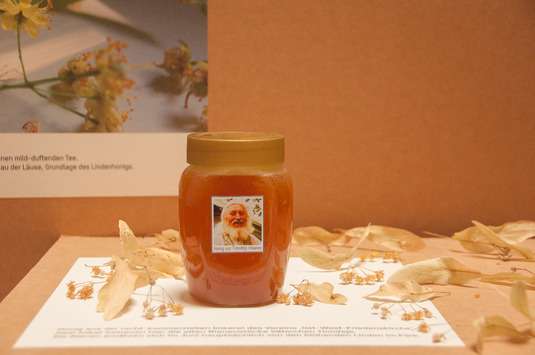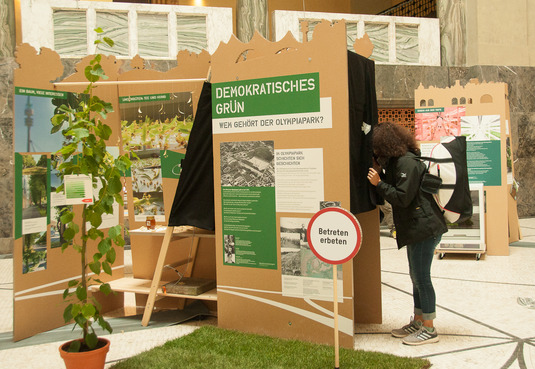Ecopolis Munich Exhibition/“Democratic Green”
Who Owns the Olympiapark?
21.09.2017
This project by Laura Kuen, Maya Schmitt and Marlen Elders, students of the RCC-LMU Environmental Studies Certificate Program, stems from research conducted as part of the exhibition project “Ecopolis: Understanding and Imagining Munich’s Environments.”
The Olympiapark. Photo Credit: Laura Kuen.
Munich’s Olympiapark has existed since 1972.
Landscape architect Günther Grzimek planned it as a people’s park.
According to the ideal of a new democratic Germany, the premise was:
openness instead of intolerance.
Walking on the grass is explicitly permitted!
What sounded revolutionary at the time is commonplace today.
So what does “democratic green” mean in the twenty-first century?
How open is the park to visitors, really?
Would a Russian hermit still be allowed to settle
in the Olympiapark?
Father Timofej’s house still stands today—a memorial.
Will the linden trees also be allowed to remain?
The fate of the once proud Munich avenue tree
is currently being fiercely debated.
There is a lot of history buried in the Olympiapark.
What future do we wish for it?
Can we find the balance between a recreational area
and an event park?
Väterchen Timofej and his Ost-West Friedenskirche. Photo Credit: Laura Kuen.
A Story of Peaceful Appropriation
Hidden behind bushes and trees, amid a gravel fallow,
Father Timofej’s chapel is located.
The Russian hermit Timofej Prokhorov settled here in 1952
together with his companion Natascha.
Out of debris from the war on the Oberwiesenfeld,
they built a church for Saint Mary and established a place of peace.
They planted fruit trees, shrubs, flowers, and vegetables
to provide for themselves
and to offer a home to bees, birds, and other living creatures.
And so a small section of today’s Olympiapark was transformed
into an oasis of calm,
which has always welcomed visitors from all over the world.
It is a story of peaceful, subversive appropriation—
Timofej had neither a building permit nor a purchase agreement.
In a wondrous way, Timofej defied official attempts to evict him
and even fought the construction plans for the 1972 Olympic Games.
Even today, thirteen years after the death of the Russian hermit,
fruit trees blossom here, bees buzz,
and visitors stroll along the winding paths.
Managed by a small association that cares for the church
and garden, the place still exudes
the unconventional spirit of the wise father.

Linden honey. Photo Credit: Florin Pruna.
One Tree, Many Interests
The linden is a classic Munich avenue tree.
That’s why it was selected for the Olympiapark
and lines its main paths.
Recently, however, it has gone out of style—
aphids living in the trees produce a sweet and sticky honeydew.
Come June, the dripping liquid is a nuisance to many,
sticking to car windows and walkways.
Beekeepers, on the other hand, appreciate the
honeydew and pollen-rich flowers of the linden.
These food sources make the linden one of the most crucial trees
for bees and other insects in the city.
Unlike for bees and beekeepers, for city planners
the importance of linden tees relies on the specific ecosystem services they perform:
they should grow evenly
and their roots should not reach too deeply.
They must also be resistant to dog urine and road salt
and, in light of climate change,
also to heat and periods of drought.
These things do not make it easy for the linden
to remain a typical city tree in Munich.
It is likely that in the future
more suitable “climate trees” will be planted:
the Japanese Pagoda tree, English oak, or Ginkgo.

The project at the Ecopolis Exhibition. Photo Credit: Florin Pruna.

